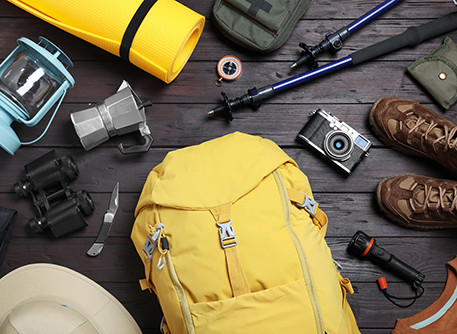Does it PAY to pay for quality kit?
If you are a beginner or novice to walking/trekking in all weather conditions, how do you balance buying quality equipment against price? Do you go for quality, no matter the cost or keep things as cheap as possible? Are you thinking would supermarket / cheaper discount brands of sports/outdoor clothing or even everyday items from your wardrobe be sufficient for the challenge ahead?
This is a tough decision as we do understand there is a lot of equipment required in order to take part in a trekking challenge and we appreciate this could be the one and only event you will need it for.
Here we provide some key points to consider when purchasing your kit:
1) Have comfortable footwear.
If you do not have any boots already, we recommend going to an outdoor shop and get your feet measured / boots fitted in store. If you have a budget in mind, let the people who know what they are doing, tell you what it best for your money.
2) Check the details of your waterproof clothing.
Although they may state waterproof, are they suitable for heavy downpours and thick snow or just light showers? You wouldn't want to purchase waterproofs and still be wet if it rains hard; this just will reduce your enjoyment of the challenge.
3) Layer up with thin and thick clothing!
It is easier to take clothes off whilst on the mountain than it is to put lots on especially if it starts to rain / gets colder quickly. Without layers, you are also unable to adapt to the changing climate as you walk up and down the mountain. We would always recommend a base layer, an outer layer, a jumper, a jacket and then waterproofs / hat, gloves and scarf carried in your bag (if dry at the start) for extreme weather conditions.
4) Clean clothing for every mountain.
We would suggest having enough base layers, outer layers, socks and underwear to wear clean for each mountain. With unpredictable weather and perspiration, you may not wish to stay in wet clothes or likewise put them back on at the next mountain!
Although the 5th point is not entirely about purchasing kit, it is very important to consider this early on as it may result in extra expense if something is not suitable:
5) Practice walking long distances and incline terrain in your kit before the challenge.
This is the most overlooked aspect participants face. Breaking-in your kit is very important; rubbing boots on your feet and rucksack straps digging into your shoulders are just two things we often see on challenge weekends. If you are choosing to use a camel-bak water system, it is also beneficial to get use to drinking from it whilst walking as it may take some time getting the hang of it. Anything that is causing you distress or discomfort which cannot be fixed, may need you to purchase replacement items which is an added expense and therefore needs to be factored in and found out early; not the day before!
Although the kit list can look daunting (and expensive!) everything on the list we feel are essential for your challenge. Even in the height of Summer, items such as scarves, gloves and hats could still be required on the summit of a mountain as the temperature will be colder than at ground level.
People who choose not to bring everything suggested or bring "equivalent" items that are similar but not the same, will often not have as positive challenge experience as others especially if the weather is not kind.
Participants will often find it difficult to justify spending money on quality clothing / kit when they are only intending to wear it for the challenge however after paying so much for the event, do you really want to have less of an amazing experience because you didn't purchase all the kit or you went with low quality products?
Price vs quality is something you will need to decide by yourself however there are things you can do to try and keep the cost of your kit down yet remain with quality:
Borrow Kit - If you are new to the outdoors / walking equipment, ask your friends, family or work colleagues if they have any items you can borrow such as head torches, rucksacks and even items of clothing. This will help keep your expenditure down.
Research - Whether it is in store or on line, check out the reviews and products first before purchasing. Whatever you choose, you want to be sure it lives up to the requirements!
Cotswold Outdoor Discount - Every Challenge Central participant will receive a discount code for Cotswold Outdoor. Utilise the promotion to get cheaper kit!
Sales & Discounted Items - Shops such as TK Maxx and online stores will often sell branded, outdoor clothing for a reduced price. This is a great way to get quality for a cheaper price. Some outdoor shops will also provide a discount if they know you are taking on a challenge for charity. In our opinion, if you don't ask, you won't know!
Birthday / Christmas Presents - If you have a Birthday or Christmas before your challenge, why not ask for money, vouchers or specific items off the kist list from your loved ones.
In summary, we would always recommend at the very minimum to have good quality, boots, jacket and waterproofs. Without these, your enjoyment could be very much hampered especially if the weather is poor. If you decide to purchase cheaper brands of tops and trousers, we would suggest at least purchasing quick dry material items as the last thing you want is to be feeling very wet through perspiration or rain!
If you have any questions about the kit list and what to buy / not buy, please contact us and we will happily answer them for you.

